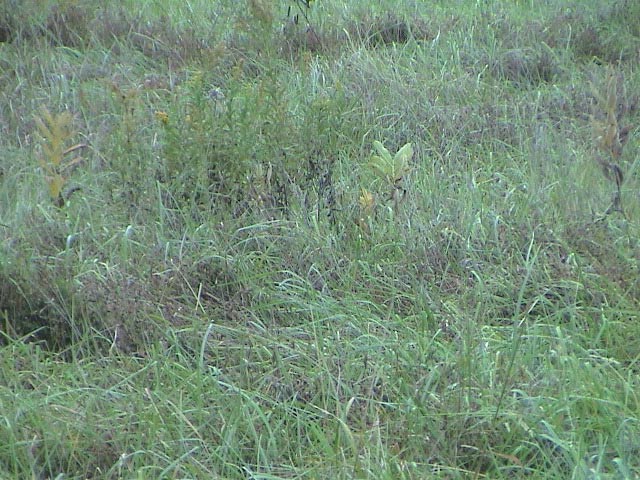Author: Sam Angima
Publish Date: Fall 2008
Due to cost, time, grazing restrictions, lack of selectivity, or by personal choice, some growers do not want to use chemical methods of weed control in pastures. Weed control without chemicals is a viable option with a number of factors to consider. A year round management plan is essential.Weeds are plants that possess some undesirable traits. In pastures, weeds can be poisonous or not palatable thereby reducing animals or forage productivity. Weeds may be prolific seed producers with effective means of spreading.Whatever the weed problem, using sound production practices will be the solution to weed control without chemicals.
New Seeding
The time to begin your weed control strategy is in the establishment phase of forages otherwise they may choke out a new seeding or allow weeds to encroach into the established stand. Before seeding a new pasture, always test the soil and apply needed fertilizers and lime to adjust the pH to the proper levels for the pasture species you are planting. Start with a well-tilled seedbed or use special drills to establish no-till pastures. Always follow suggested seeding rates for the species desired. Using rates that are too low will invite weed encroachment. When possible, select fields with a low weed population. Avoid fields severely infested with perennial weeds and if present, control them prior to seeding. One strategy is to till or mow every 2-4 weeks throughout the summer. This helps deplete the weeds carbohydrate reserves, weakening and eventually killing them. Then follow with a late summer seeding in September-October. Late summer seeding means fewer annual weed problems as well. Do not use a companion crop or graze these seedings until the following spring.
Annual weeds may threaten spring seeded pastures. A companion crop such as oats or barley will decrease annual weed levels and control soil erosion. It is desirable to chop these small grains at the boot stage to remove annual weeds especially if cut at 10-12 inch height. Harvesting as silage or hay provides higher quality forage and allows more time for the under-seeded grass and legumes to establish.
Established Pastures
Many pastures become severely infested with weeds due to continuous grazing. Overgrazing results in an open sod that allows light to penetrate to weed seeds and seedlings. Undergrazing can be harmful as well, as excessive growth will smother new shoots, inhibit tiller development and weaken the desirable species thereby creating open spots for weed encroachment. Use rotational grazing to avoid these problems.
Livestock should be left in a paddock until the grass has been grazed to the proper height (generally around three inches), then moved to another paddock and so on. The original paddock is grazed again only when it has had sufficient time to recover with vigorous pasture that easily competes with weeds (generally about six to right inches). Rest periods may range between 15 to 35 days depending on the season and forage species. Maintaining proper fertility and pH is also critical in maintaining a healthy stand and decreasing weed encroachment.Walking your pastures often is another key to weed control. This is the best way to catch weed problems before they become serious. Weeds should be hoed, pulled, or cut before they set seed and spread.
Mowing is another option for weed control in pastures. Mowing on an interval that allows weeds to re-grow between mowing will eventually kill or reduce the number of some weeds. If weeds are encroaching due to thin stands, introducing new species or increasing density of current species will help reduce these problems.


